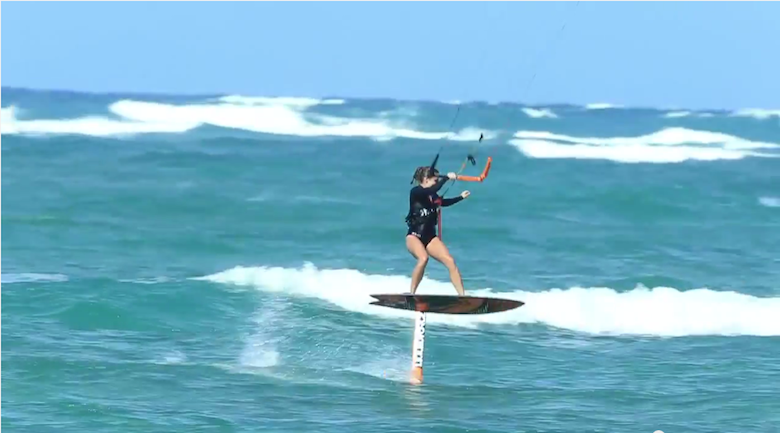Liquid Force Covers How-to Foilboard With the LF Foil Fish
If you're ready to take your kiteboarding experience to the next level, Liquid Force is willing to take you on a how-to journey of all of the ins and outs of foilboarding. Join sultry-voiced narrator Siskar and LF Team Rider Sensi Graves on a trek through this instructional video on the beginnings of foilboarding. Liquid Force's tutorial focuses on how to carry your foilboard, prepping your launch, how to launch, staying on your foil, and how to prepare for crashes.
How to carry your foil board
Carrying a hydrofoil board can be a bit awkward. You want to make sure that when you are carrying your foil board the foil is pointing away from your body. You're able to carry the board like a surfboard, placing your arm close to the mast intersection to keep your board balanced. Be sure to carry your board courteously and be sure to watch for others - you don't want to knock anyone down trying to rush to the water! Be sure to avoid placing your foil board down in any active launching or landing areas. Foil boards are extremely sharp and can damage property if placed in the incorrect spot.
Hitting the water with your foil board
Liquid Force recommends all riders to give your board a test swim without your kite to make yourself accustomed to the movement of the foil board when positioning, body-dragging, or getting ready to ride. When it comes to kite size, LF suggests using the same kite size that you would for a normal kiteboard - that way, you don't have to worry about your kite power so you can hone in on your foilboarding skills. When your kite is ready, pick up your kite the same way you carried it onto the beach and bring it into the water. When you're body dragging in deep water, be sure to use the front footstrap to control your drag direction. If you're using your foil board in shallow water, you can control your drag direction by grabbing the upland rail of the board and use your elbow to lever your foil towards the surface of the water. This will allow you to drag your foil board in shallower areas without hitting anything on the bottom.
Launching your with your foil board
When you're in deep enough water, push the foil to the downwind side of your body and body-drag back to the foil. Be conscious of your legs and feet near the foil, making sure that they are clear and out of the way. To start your launch, orient yourself as you would in a normal start position, with your front hand on the control bar. Then, grab the toe-side rail of the board and use your elbow to lever the foil upwards. Put your front foot in the strap and push your board away to secure your back foot. Once you have your positioning, water start as normal by diving the kite, rolling forward, and standing up with your own leg power with significant weight on your front foot.
Staying on your board
After a successful launch, you'll want to keep as much pressure on your front foot as possible to keep the lift of the foil disengaged. LF recommends to riders to ignore the muscle memory driven from kiteboarding. Foilboarding requires more front foot pressure and a forward body position. When riding, you don't have to worry as much about riding up wind because the mast will allow you to ride up wind without having to ride on foil.
Crashing with your foil board
If you feel like you're going to crash, don't try to save it. Just eject from the footstraps and jet away from your foil. Because of the sharp edges on the foil, you want to give yourself plenty of room to crash.
Some additional notes:
- LF recommends using very loose footstraps, which will help you get away from the board easily when crashing.
- For the first couple of rides using a foil board, ride the board on the surface of the water until you become more comfortable with the riding style and to not ride the foil right away.



Recent Posts
-
Foil Drive Masterclass | Tips and Tricks for Surf Foiling
Foil Drive’s latest surf masterclass offers valuable insights and practical tips to enhance y …17th Jan 2025 -
Appletree Surfboards and Foil Drive | Testing to See Which Board is the Most Fun!
Appletree Surfboards and Foil Drive joined forces to create an informative and exciting d …16th Jan 2025 -
Foil Drive Max vs. Slim | The Battery Breakdown For the Everyday Rider
Judging by the number of calls we get about the Gen2 Foil Drive, it's a popular choice for f …6th Jan 2025




